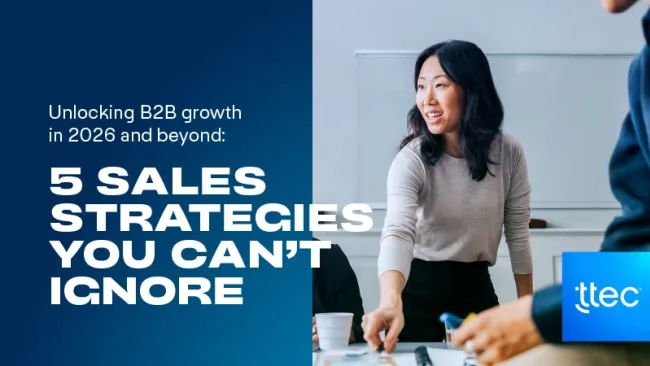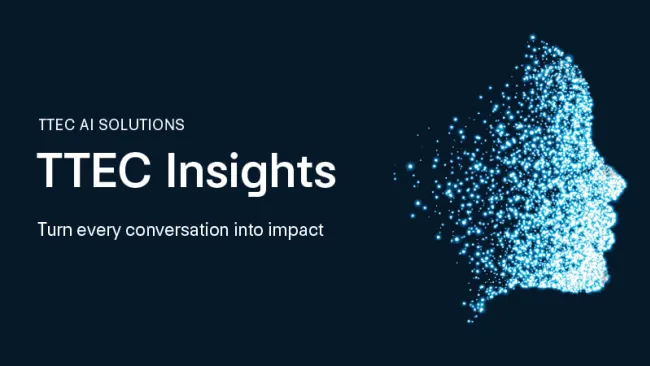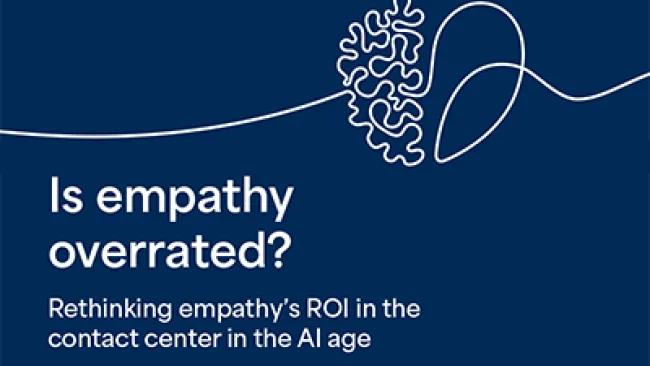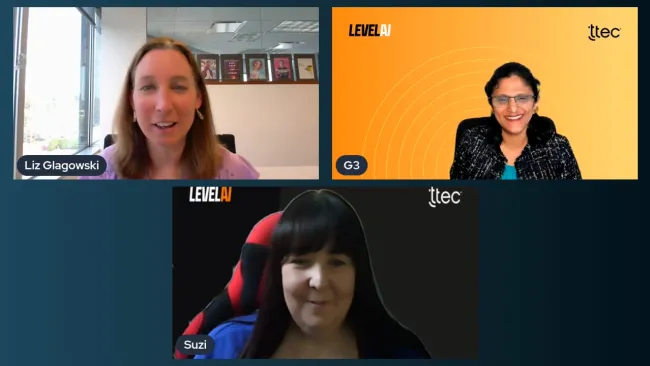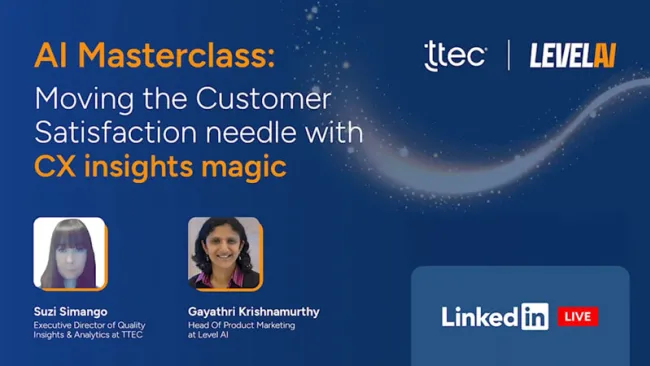Customer support is rarely the first thing that comes to mind when you think of Dow Jones, parent company to the Wall Street Journal, Barron's, and Marketwatch. Yet it’s an important part of the news and publishing firm’s success. Thom San Filippo, vice president of customer service and experience design at Dow Jones, explains what it takes to deliver frictionless support to a global, tech-savvy audience and why the company is doubling down on contact center training and development in a digital-first era.
Transcript: You're listening to the CX Pod by TTEC and the Customer Strategist Journal.
Judith Aquino: Hi, welcome to the CX Pod. I'm Judith Aquino and today we'll be talking about the Dow Jones Company, but we won't be talking about financial news. We'll be discussing the company's approach to the customer experience.
And joining me in that discussion is Thom San Filippo, vice president of customer service and experience design at Dow Jones. Welcome to the show, Thom.
Thom San Filippo: Great thanks for having me.
JA: Overseeing customer service and experience design is a logical combination, but it's not one that I see very often. So can you tell me what is a typical day on the job like for you?
TSF: Sure. So I've been at Dow Jones now for 20 years. The last 13 I've been in the customer service department and I like to say that I've never had the same day twice. And I guess part of that is we're a news organization, right? So we're 24/7 and things change every day. So just this week we were dealing with a hurricane in Florida and then the end of the week we started talking through some of the political unrest in Hong Kong and how that affects my staff. Currently I have 500 staff and we're in eight different locations supporting 11 different languages.
JA: Wow. And so when it comes to things like metrics, how might a metric like say customer effort score or NPS inform what you do in terms of experience design?
TSF: Sure. We have KPIs and service levels, like all other companies. One of the ones that we push on and folks argue with us all the time might be AHT on a part of my business. So for the Wall Street Journal customers, we've come to find out that our customers want speed, they want speed on their calls and they want it to be easy.
And we've been able to show the staff, look, we're not doing it to make you work faster or harder or get more work. We actually just showed them numbers in the last six months. As we took 30 seconds off of phone calls, we were able to drive Net Promoter up seven points. So clearly our customers want it to be faster and easier.
JA: That's a really interesting source of insight that I think often gets overlooked also when you're talking about advocating for the customer. And so I'm wondering does that mean you're also pushing back say on load times for ads to speed up or improve the experience?
TSF: Oh, absolutely. So we have an entire reporting team that works in my department and part of it is they push almost on a daily basis. Some of the customers, you know, like real-time feedback. So it could be, hey, today we logged an ad covering the page and we'll know that early in the day and the group in the advertising department, we'll quickly get on that. Or it'll just be something that's a slow burn and takes a long time for folks to figure out like, Hey, your page takes a lot longer than x, y or z news organization's page takes, you know, what are you doing about that? And those two examples are actually real ones that our tech folks have been working on for the last two years.
JA: And for about how long has that type of collaboration existed between different departments from customer service to the reporters?
TSF: Yeah, so that's an interesting one. It changes over time. So again, I've been here for 13 years and it all depends on who's in charge and who's willing to listen. Whether it's called experience or customer service or how much of the organization we're responsible for, that has come and gone in and out of favor. I would say, depending on who our CEO is, currently we have a great one and you know, the customer is at the forefront of everything we do.
JA: Great. And I should also tell our listeners that you're a finalist of the customer experience leaders category of the ICMI Movers and Shakers list. Congratulations and I hope you win.
TSF: Thank you. I'm very proud of that.
JA: And so what's an example of an idea that you had to improve the customer experience and how did you go about implementing it?
TSF: Sure. You know, for us some of the simple ones this year or the most logical ones were mobile optimization for our self-service websites. And we introduced a chat bot. So mobile was a good one.
We have volumes [of data] on how many people come to our site on mobile or desktop and we have an iPad edition as well. And we never had a mobile optimized website for our customer service. So we introduced that about 18 months ago and we went of course from zero because the desktop site didn't work very well to almost 18% of all of our self service now was done on the mobile application. So that was a big win for us.
JA: Did that take a lot of work on the backend in terms of getting buy-in?
TSF: It was more of a political play, right. So who owns self-service? Who owns the look and feel? Should it look more like the actual product? Should it be a separate destination? So I'm happy that, that the groups got along to build that.
JA: And did that involve also strategies on how to teach, or almost train your customers, to use the mobile self-service option?
TSF: Sure. We had to consistently argue with the designers "hey, make it more readable. That text doesn't work." And then we did two full rounds of user analysis. We brought our actual clients in, our actual customers in. We had them look at the website, they made comments in real time and we had them, work and respond with the designers and the UX designers as well.
JA: Of the process that you just described to me, is that typical of how Dow Jones enhances the customer experience?
TSF: So we have two sides of the business. We have the consumer brands, you know, the Wall Street Journal, Barron's, MarketWatch and things like that. And I would say that they're getting much better at that. The B2B side of the house, they've been that way for a much longer time. So there are products [such as] Factiva, Risk and Compliance--Dow Jones newswires --those, typically have always had a closer hand with customers and that's because those are sold at a salesperson level. So there's always somebody speaking with the customer. The feedback always comes through the service department.
JA: It almost sounds like B2C is learning from B2B, whereas I hear about it more the opposite.
TSF: Yeah. Because we have folks that are always with customers. We have salespeople out there, you know, globally. Every day they actually get feedback faster for what customers want on the, on the B2B side of the house faster than we do on the consumer side. To be honest, I, you know, a lot of that is driven by things we want to put out as a company and then we take feedback after something goes live. So for instance, we made a deal with Apple News and we were one of the first news providers for Apple News, back in the spring. And that was an early deal. And then we've taken feedback along the way as well as Apple to make some changes this fall.
JA: And do you find, is it easier to make changes on the B2B side versus B2C?
TSF: No, actually, because so many more people are involved in the impact. So if you worked for one company and you asked for or requested a change, and I was about to make that change, we do have to alert and work with some of the other companies to see if that would impact them.
JA: Right. Okay. That makes sense. In your experience what do you find gets overlooked in creating a truly customer-centric organization?
TSF: Yeah, that's a good question. I would say the customer, you know, I, I think it's really a balance. We always try to give the customer everything they want. And that's really not practical and sometimes we have to pull, pull ourselves back on that. So there does actually need to be a balance of, you know, what's right for the customer versus what's right for the business. And I think that's actually healthy conflict. And we have experienced architects, we put them, we embed them in product designs and rollouts. And I think that that conflict that they bring to the room actually is healthy in that, I think that spurs new ideas.
JA: Right. And in maintaining that balance, would you say that data analytics is key or is it more about the human experience?
TSF: That's interesting as well. So I think it's a little of both. So I, again, I have an entire reporting department in my group that presents volume metric things as well as the complete voice of the customer. But over time now, Dow Jones has built out an entire data organization that can do everything from a socioeconomic situations as well as overall utilization. And if a customer is inclined to do these three things, they download an app, they read two stories in the newsletter, maybe their propensity to churn is different. So, you know, we do things like that. So we bring data to bear, but then nothing hits home like just listening to a call. Right. And we, you know, recently we've been providing our CEO with calls that he listens to as well as bringing more and more calls into various meetings or presentations. So if you read a chat transcript or you read an email or you listen to a call, that definitely hits home for a lot of people.
JA: Mm. So would you say that as you're introducing more data or even AI-powered functions, you're focusing as much on the human side?
TSF: I think both of those play a role and neither one should get overlooked at this point. You know, AI at this point is probably one of the biggest buzz words and everybody wants to bring it in and I agree, right? It's the next best thing. But I think what people will find out are the better you get at that what you're left with are high touch work that the skills that are necessary to manage in a call center or a contact center actually are allowed, are a lot harder. Right? So you have to reinvest in the staff, the people that actually communicate our brand out to our customers.
JA: As someone who's always on the lookout for improving the customer experience, what contact center trends are you watching?
TSF: It's funny, I've been to three different conferences in the last six months and it's everywhere is AI, AI and chatbots, right? That again, that's the next best thing. And the next big thing that's out there. I personally, I don't think that, I think very few people are doing a good job of those right now, but it's just a matter of time before everybody gets better at it and again, I think what that leaves are a higher touch, you know that all that's going to do is get rid of all the low-hanging fruit. It's going to leave a higher touch contact for the contact center to deal with.
JA: And so if that's the case, if it's making things more complicated, it's almost ushering in the need for other products. Like are you also thinking of more advanced uses of say, cloud technology?
TSF: For us, not so much the cloud stuff. What we are looking to do this year as we, for instance, we did the Apple roll out and we found out about that project days before it went live. And in 24 hours we had to train 400 agents across the globe. So we are currently looking for better and easier and more dynamic ways to do training across the board and to get information out to folks as fast as possible. So our typical training on either B2B or B2C right now is mostly modules and you know, the old fashioned stand up with a presenter in front of the room. So as we look towards, better web based training and online training, we're also looking for gamification in that world. So putting out little snippets every day for people to get better and to continually learn and improve over time.
JA: And is that because you are hiring even more agents now and thinking more in terms of scale or is it that they need to gain more skills faster?
TSF: It's a little of both. So this year we, for the first time we insourced a small portion of, so we outsourced 80% of our work and then we have a team, we have teams in five other locations. We insourced a piece of that work this year. So as you try to train across multiple locations 24/7, some of the speed is needed to get folks to learn these things. And yes, we are also increasing the need for our folks. Right. So what their specialties are.
JA: I see. And do you have any other advice for companies in terms of future proofing? There's an ugly buzzword, but I mean preparing for the future in terms of the customer experience.
TSF: Yeah, it's interesting. I come from a tech background before customer service and I've always appreciated that Dow Jones from a technology point of view is never first to market on some things. And I think the same should be true in customer service, or try things, fail quickly and start all over again. Because back to the chat bots, we worked with a company in the beginning of the year and they showed us two or three iterations that they had done for some pretty big name companies. All of them got scrapped within the first six months and they went back to the drawing board. So either you've got to try quickly and cheaply and see if it works and pull it back or step back a little bit and see what else works in the marketplace for a similar business like your own.
JA: And does that mean testing it on the customer quickly or are you talking about testing things also just internally from, with your employees?
TSF: A little of both actually. So we did roll out a chat bot, right? We rolled out a chat bot, we, I gave the guys eight weeks to build it. They did an incredible job. We put it out there and then we found out weeks later, oh, you know, this gives a rise to email or satisfaction works on this transaction but not that transaction. So we were able to make some adjustments and now we're doing a whole big phase two on what all of the things we've learned where typically what we would have done was spend six to nine months perfecting it, putting it out there, and then realizing, oh, the customers aren't responding to this or that. Instead, by us getting it out there faster, the things that weren't working we discontinued very quickly and the things that were working, we're moving forward and actually enhancing it.
JA: And it sounds like also you would need executives who are comfortable with that level of risk too.
TSF: Yes. Which we were lucky to have the last few years.
JA: Well, thanks. This has been a really interesting conversation.
TSF: Yeah, this was great. Thank you so much for your time.
To learn more about bringing Humanity to business. Come see us at TTEC.com or subscribe to our journal at CustomerStrategistjournal.com. Thanks. See you next time.







